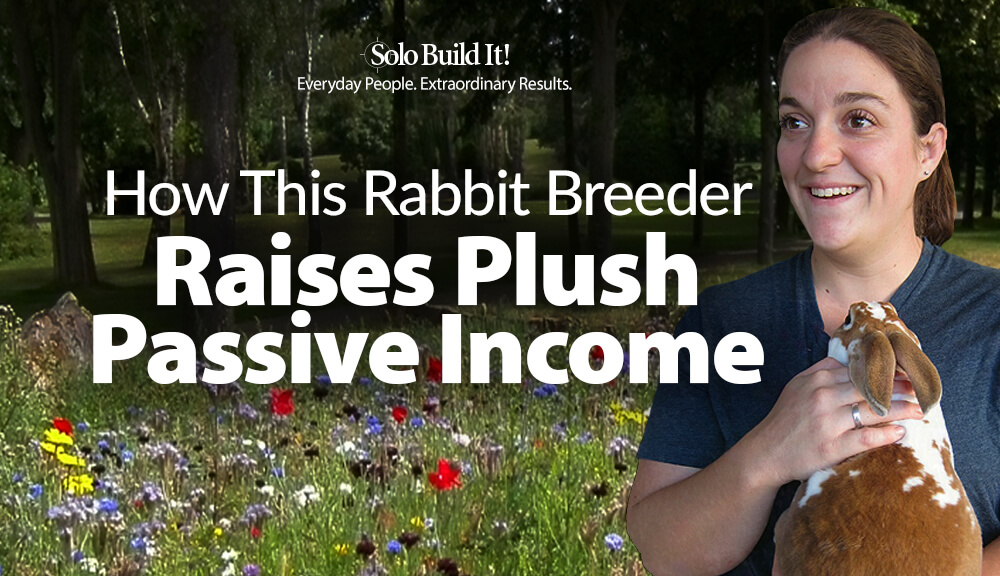
The other day I was chilling with extended family. My phone binged – it was a notice from PayPal letting me know that someone had dropped $$ into my account. That’s what I love most about being an online business owner – getting paid while I’m playing.Karen Patry from www.raising-rabbits.com
Karen Patry began her career in rabbits when she was 16 years old. She was fascinated by three small rabbits she spotted in a pet store, and bought them with her pocket money.
Three decades later, she calls herself the “chief barn mucker” at her Aurora Rex Rabbit Ranch, where she raises a certain breed of rabbits exclusively (Rex rabbits, renowned for their amazingly plush fur).
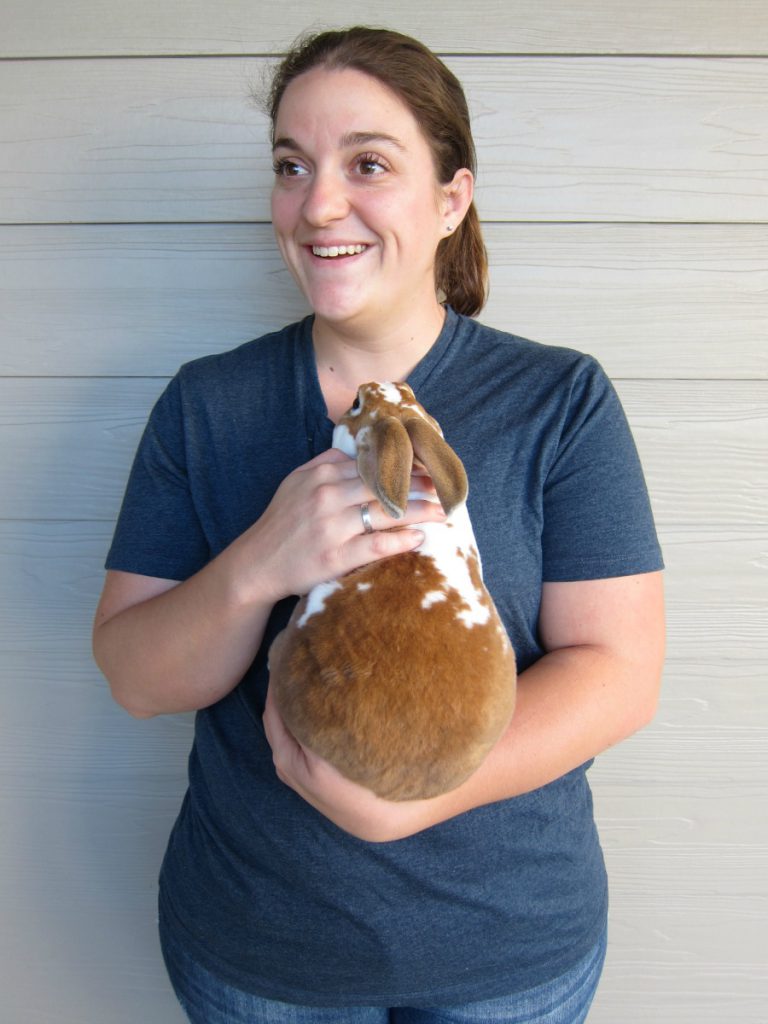
When Karen realized how much — potentially dangerous — misinformation was being circulated on the web, she set out to create a much more comprehensive and accurate resource center for raising healthy rabbits.
At the same time, this resource would provide her with a significant (mostly passive) income stream to supplement her family’s income and to help fund her retirement.
We spoke with Karen to find out how she achieved her goals, which challenges she mastered along the way, and what advice she can give to you, as a fellow (or soon-to-be) solopreneur.
1. Raising rabbits sounds like a wonderful hobby. But how did you know that it had great business potential too?
Raising rabbits is indeed a wonderful hobby. When I began to grasp the huge potential of making an income online, I did the monetization research as outlined in Solo Build It!’s Action Guide. The research told me that the business potential for my preferred niche might not be the best.
I chose to pursue this topic anyway because I was passionate about the rabbit hobby, and there was no decent website online like the one I envisioned.
When you intend to turn your hobby, skills or passion into a viable business, you need to do your research first. The first 5 chapters (we call them DAYs) of the SBI! Action Guide are dedicated to helping you find and refine the best possible business niche for you.
You’ll make your decision based on several quantitative and qualitative factors:
- How much demand is there for your topic?
- How much competition is there?
- How monetizable is your niche?
- Are you passionate about the topic?
- Are you knowledgeable about the topic?
- How much time do you have to work on your website and online business?
So, when Karen decided about her niche, raising rabbits, she knew that the numbers for this topic might not be as good as she had hoped for, but for her the passion factor was more important.
In addition, her research revealed a gap she intended to fill — more about that in her reply to question number two.
2. What were your initial goals for www.raising-rabbits.com? Have these goals changed over time?
My goal for this website has always been to turn the site into a significant passive income stream in order to fund my retirement years. To that end, I planned to create a website that would provide comprehensive information and how-to instructions on all aspects of raising rabbits.
It has happily (amazingly!) turned into a significant global authority on raising rabbits.
My initial strategy was simple – write as many pages as I possibly could in the shortest amount of time. I followed the SBI! Action Guide religiously.
Eventually I began to passively monetize the website with Google AdSense, and later with Amazon ads. This provided enough income that by the 12th month, AdSense paid me more than enough to cover the entirety of the following year’s subscription of SBI!.
There is not a chance I could have succeeded with Raising-Rabbits without all the behind-the-scenes help and training that come as part of the SBI! subscription.

They also have access to a supportive, knowledgeable community of like-minded solopreneurs in the SBI! forums. No question goes unanswered for more than 24 hours.
And finally there’s the Solo Build It! support team, who will not rest until a member’s issue has been resolved, and he or she can go back to what matters most: building his or her business. With that, let’s get back to Karen, to learn how she turned her raising rabbits hobby into a well respected, global online resource.
Some of the info I present on Raising-Rabbits is in direct contradiction to other rabbit advice, especially from animal activist sites such as the House Rabbit Society. The advice of the HRS and other animal activist websites is plastered all over the internet, and is at the least deceptive, and at the worst, completely erroneous.
To understand why really bad rabbit advice would exist online, it helps to know that there are two camps of thought in livestock circles, including amongst rabbit owners.
One group of rabbit owners believes that rabbits are meant to be used for the good of humanity. (This is my belief.) In nature, they breed “like rabbits” for the express purpose of feeding predators, including humans and our carnivore pets – dogs and cats.
The other group of rabbit owners, spearheaded by animal activists, is diametrically opposed to the utilitarian view. They feel that rabbits are no different than people. They are sentient beings, have feelings, and should be given every right that a human holds. (Or better yet, humans should not own animals at all, because ownership is animal slavery; let all the domestic rabbits go extinct.)
There is no way to reconcile these two groups. The first doesn’t care if you want to treat Mopsy and Peter Cottontail as equal to humans. “Have at it,” they say, “but don’t force it on us.”
But the second group cannot allow you to violate their own belief system. For them, that would be closing their eyes to murder. This results in the extreme venom and animal terrorism that the radical animal activist ends up wreaking on the heads of any who do not agree.
People now find Raising-Rabbits, which offers excellent, actionable answers that work for their rabbits. They’re ecstatic. Their compliments burst forth like joyful fireworks. They also contact me via the contact page or via email and ask for more answers, especially if they don’t want to take the time to find the page that addresses their issue (it’s there, I’m sure) and then read it.
So, especially in the early days, I answered nearly every one of the many hundreds of queries personally. I charged nothing. As the page count grew, Content 2.0 invitations went up on the site.
One doesn’t pay for retirement by earning nothing for the hours per day or week spent on over-delivering excellent advice. I wised up when I realized I was answering the SAME questions over and over again.
That’s when my strategy shifted to creating eBooks (more on that below).
The more knowledge and experience you have in your niche, the easier it is to a) create outstanding content and b) establish yourself as an authority. Can you still succeed when you don’t know so much about your chosen topic? Yes, but it requires creative solutions.
Fellow SBIer Arthur Gueli, for example, outsources all content writing for his “Injury Claim Coach” site to a retired judge. It took him a couple of years and a dozen of writers to finally find the best person to work with; but it paid off in the form of a thriving business in a niche where Arthur himself wasn’t that knowledgeable.
Speaking of content… one smart way to have highly relevant content created for you, for free, is to invite your visitors to ask questions on your site. With SBI!’s Content 2.0 module that Karen mentioned above, this is super easy to do.
Chances are that you get emails with questions from visitors anyway. Rather than answering each email one by one, Content 2.0 allows you to answer each question publicly. Your visitor is happy, because she got her reply, and you added relevant content to your site. In addition, other visitors can chime in as well with their comments.
Check out this page on Karen’s site to see a Content 2.0 submission in action. At the top is the visitor’s question, then comes Karen’s reply and finally you’ll see comments from other visitors. You can also use Content 2.0 for other purposes, e.g., to hold contests or get image submissions.

3. You provide lots of information and resources for free. How do you “upgrade” people from being free content seekers to paying customers?
To “upgrade” readers, I dialed back a lot of the free information on many website pages. I still provide “enough” free info on the website, but clearly no topic can be completely covered in a single web page.
If folks want the whole scoop, it is smart and easy to purchase an eBook or three. I priced these at a price point that I thought was reasonable and competitive.
I also market my eBooks throughout the website on strategic pages where the information is applicable. Readers can click through to more information or directly to my online Raising-Rabbits Store to make a purchase.
However, unless you are a well known brand, people will not buy from you unless you give them a reason to trust you; they need to recognize you as what you are: an authority in your niche.
How do you do that? By PREselling. PREselling is all about giving your visitors what they’re looking for, which is information to solve a problem, fix a need, or fulfill a desire.
That’s what Karen is doing with her free information. And, although she says she dialed back on the free info, there’s still a lot on her site. Most visitors will be satisfied with reading her articles. But some will want more. They revisit her site. They subscribe to her newsletter. They buy a first eBook. They love it and come back to buy a second one, or to try out Karen’s other products.
When done the right way, monetizing your visitors works like a charm.
4. You sell no less than 8 eBooks on your site. How did you decide on the topics?
Initially, I was planning to write an eBook that would provide general information encompassing much of what is offered on Raising-Rabbits. But then I realized I had a gold mine in all the questions and answers located both in emails and on my Content 2.0 pages.
I queried my favorite publishing house, Storey Publishers, with my idea of a question-and-answer book addressing ALL the various issues a rabbit owner might encounter.
Such a Q&A book would admirably complement the tried and true classic Raising Rabbits book which had been published years ago (and was in the 4th revision). To my utter delight, the very smart folks at Storey jumped on my proposition immediately. Within 2 months I was under contract and writing furiously.
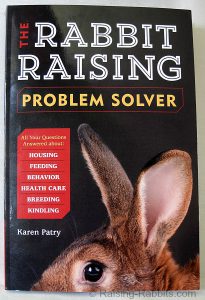 The book they helped me create was a beauty! “The Rabbit Raising Problem Solver” has 4 parts. Parts 1, 2, and 3 address the needs and nature of rabbits both in the cage and in the wild. Part 4 breaks with the question-and-answer format to present solutions to the most common rabbit diseases.
The book they helped me create was a beauty! “The Rabbit Raising Problem Solver” has 4 parts. Parts 1, 2, and 3 address the needs and nature of rabbits both in the cage and in the wild. Part 4 breaks with the question-and-answer format to present solutions to the most common rabbit diseases.
I’m quite proud of this because it is an authoritative resource for health that can hardly be found on the internet except in complicated veterinary volumes. Other websites that do have answers tend to have SimilarWeb rankings so low their content rarely shows up in search results.
The icing on the cake are the enchanting illustrations of rabbits throughout the book, created by an extremely gifted graphic artist. This book is selling well, and has gone into its second printing.
Deciding on the topics for my other eBooks was fairly easy, too. I had already been answering the same questions over and over. After a while I began to get a sense of the areas of rabbit raising that people most frequently want help with.
I also went to the traffic stats for confirmation of the different keyword searches that resulted in a visit to my website. This was to ensure I’m identifying all glaring needs.
Cages and hutches was a big topic, so I wrote an eBook on rabbit housing.
Additionally, I acknowledged the great divide among rabbit owners by splitting the electronic file into two smaller eBooks, a rabbit-cage eBook directed to pet rabbit owners — who will never need a hutch frame supporting large cages, for example — and one directed to livestock rabbit owners, who love that very large hutch frame.
To the cage eBooks I added ones on rabbit reproduction, rabbit breeds, feeding rabbits, and rabbit health, all of which are important to anyone who raises rabbits for any reason.
I still do not feel the website is adequately monetized. My plan is to convert all my eBooks — which I currently sell as PDF files on my site — into Kindle versions, so that I can offer them on Amazon, too. I also plan to create two more paperback volumes: one with rabbit housing info, and the other one with feeding and reproduction info.
I would also like to add more hard goods, such as rabbit supplies and toys, to the currently offered raw frozen rabbit meat for pets and a granola-like rabbit feed supplement.
Treat the questions, comments and feedback you receive from visitors as what they are — a goldmine of ideas and material for creating products to sell. This could be an eBook, an email course, a video course, or even physical goods, like DVDs and printed books.
Dive into your traffic stats. SBI! comes with its own traffic reporting, where you can see which search terms people use to find your site, and where your traffic comes from. With Google Analytics, which is free to use, you’ll get even more insights. For example, it will tell you which of your pages are the most popular, how long people stay on each page, age, gender and geolocation of your visitors, and a lot more.
Don’t be afraid to think big. You have a printed book in mind? Approach a publishing company. With your site as credentializer, chances are that they will say yes to your proposal!
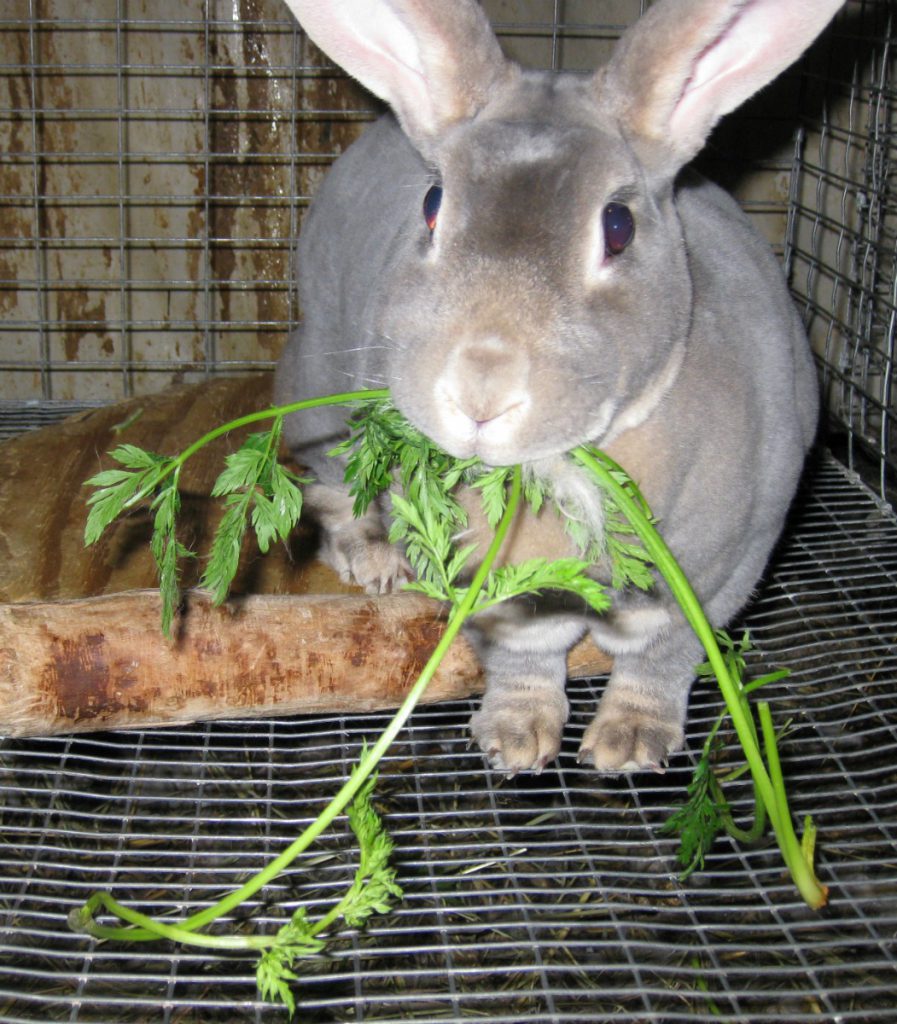
5. In your store, you also sell physical products, like rabbit supplies and frozen rabbit meat. How does that work? Do you ship the goods from your home?
Most of the hard goods in my store are drop-shipped. This means the orders come to me from the website. I pay a wholesale price, create and communicate a packing slip, and the manufacturer or producer then fills the order, shipping directly from their end.
I do ship books from my home. I autograph The Rabbit Raising Problem Solver and ship it out from home. Other than my own books, I don’t stock anything.

You may not be familiar with the term “drop shipping.” It means you get someone else to package and ship your products for you. When someone orders a product from your online store, the product gets packaged and shipped to your customer directly by the manufacturer or producer. It shows up to their door without you ever having touched it.
You earn the difference between the wholesale price (plus applicable shipping and handling fees) and the price you charge for the product. We asked Karen for any specific tips around drop shipping, for example how to find a reliable manufacturer to partner with. Here’s her reply:

I mostly just kept my eyes peeled, and the opportunities found me. For example, I knew I wanted to help rabbit breeders who needed an outlet for their meat rabbits.
There are several businesses online that process and freeze ground whole prey rabbits for dog and cat consumption. But these businesses are typically maxed out due to high demand and don’t have enough inventory for their own customers.
Then I discovered a business that comprised a network of rabbit breeders doing what I had in mind – obtaining rabbits straight from the breeder/producers and having them ship the frozen rabbit directly to the customer. They were more than happy to take care of my customers, and actually had to add more processors to their network to fill the needs of my customers.
Rabbit cage manufacturer and supply companies frequently attend rabbit shows because that is where many of their customers congregate at one place and time.
While at a rabbit show, I approached a cage building company and inquired about a drop-shipping arrangement with Raising-Rabbits. They were thrilled to participate.
This particular cage company was eventually sold, and the new owner was absolutely horrific as far as customer service, to both me and my customers. I fired that company, and am in the process of working out details with another nationally respected cage manufacturer.
A good starting point to find manufacturers? Think about where you buy or would buy the respective products.
Industry shows and fairs are a good option, too. Another place to find dropshippers is the wholesale directory published by World Wide Brands.
6. What other income streams do you have, apart from selling your eBooks and physical goods, and how do they perform?
My other income streams are Google AdSense and Amazon affiliate links.
Because my site is a well established authority in the raising rabbits niche, I don’t have to look for suitable affiliate programs any more. They come to me instead.
Just recently I was contacted by chewy.com, a large online pet supplies store with an affiliate program. I’m in the process of putting up Chewy links in appropriate spots on my site.
I also got an invitation from Amazon to their invite-only new publisher service, called Unified Ad Marketplace. This is supposed to be a big deal, and should improve earnings per click and overall income.

7. How long did it take to start earning income from your online business? Is it a full-time or a part-time income?
I began earning income within 6 months of going live on the internet. It was purely passive at the beginning. The first Google AdSense paycheck was like $10 and change. But within another 6 months, that number was very close to $300, and I paid for the following year’s SBI! cost with it.
Currently I’m earning a part-time income. I am confident that — with a little more marketing and diligence — I can double (or triple) my income within the next 1-2 years.
As you probably guessed, there’s no one-size-fits-all answer. The time it takes to build your site and to start earning money is different for every person, and for every business. Building a business online or offline takes time and consistent effort.
Using SBI! can shorten the learning curve, though, by quite a bit.
First of all, with SBI! you don’t have to be a techie, you don’t have to have website-building experience, and you don’t have to know HTML, CSS or any other alphabet soup. (If you do know code and want to upload your site, don’t worry, you can. People with technical experience love SBI!, too.)
Solo Build It! is self-paced, so you can go as quickly or as slowly as you like in your site- and business-building.
Using the included step-by-step Action Guide, you’ll have a very good idea of what your personal time frame to profits could be. You’ll also have a good idea of the overall growth and profit potential of your chosen niche.
8. What has been your biggest challenge so far as a solopreneur?
Time! The more traffic, the more opportunities. The more opportunities, the more time must be invested. The more time needed, the more I have to pick and choose which projects to do today.
If I were more organized, this might be easier to handle. To help, I have employed two part time employees — one to help manage social media, and the other to help me research content for my pages.
That is indeed a big challenge, even with a streamlined all-in-one system like SBI! to support you. At some point, especially if you want to grow your business further, you’ll have to consider outsourcing certain tasks, or hiring part- or even full-time employees.
The idea of hiring help unsettles you? No need to panic! 😱 Remember that you’ll start small. You’ll set your own pace. Step-by-step, your skills and confidence will grow, along with your business. Then, when you feel ready, and when you have the income to pay for help, you’ll hire or outsource.
Or you may decide that the level of income you’ve reached is enough for you. You don’t have to grow your business any further, if you don’t want to. The decision is entirely up to you. Some SBIers discover their “inner entrepreneur” while others are perfectly happy adding some extra income to their retirement checks.
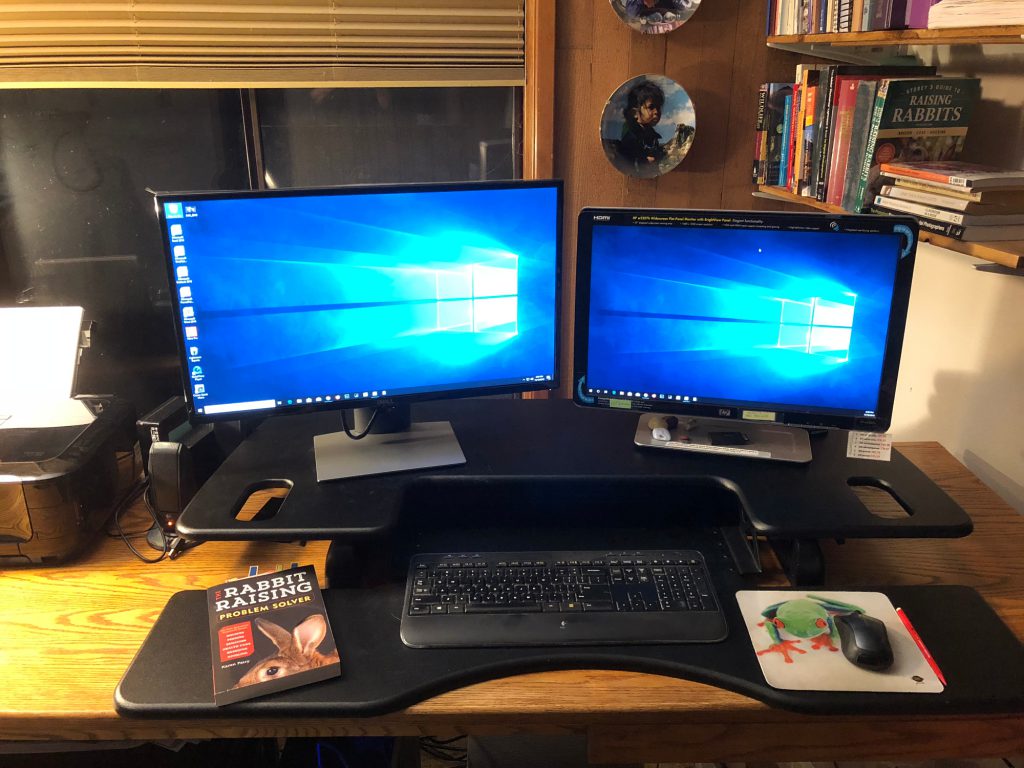
9. What do you enjoy most about being an online business owner. How has it changed you, your life, your family?
The other day I was chilling with extended family. My phone binged – it was a notice from PayPal letting me know that someone had dropped $$ into my account.
That‘s what I love most about being an online business owner — getting paid while I’m playing. That doesn’t happen overnight of course. I’ve put 10 years into building Raising-Rabbits, worked hard, laid the groundwork, built up the pages, inserted the affiliate code, etc., etc. And now my phone bings quite a bit.
The extra income goes a long way to reduce financial stress. We like to sock away the overage into savings. So when we had to replace an automobile, for example, we had nearly all the funds we needed at the outset.
The other awesome thing about being an online business owner is that I work for myself. I make my schedule, and typically work 8 hours a day. But I can arrange those hours as needed.
I love the freedom I have to take a break to help someone in need, babysit a grandchild, or go hiking with a friend, an activity I used to advantage every week all summer long to benefit my other website, www.beautifulpacificnorthwest.com.
There are of course other ways to generate passive income, like investing in stocks and bonds, or buying rental properties. However, for those you need to have a decent start capital and/or invest for a really long time frame.
To start an online business, on the other hand, you need very little capital upfront. The financial risks are minimal too. But — make no mistake — you need patience and commitment. As Karen said, it does not happen overnight.
How high are your odds of succeeding with an online business? That depends a lot on your BAM (Brain – Attitude – Motivation) and on the platform you choose. In recent data studies we discovered that your chances of building a high-traffic website are 9X to 115X higher with Solo Build It! than with other site-builders, including WordPress.
10. And finally… What’s your top tip for someone who is just starting a solopreneur career?
Traffic is connected to keywords, so understand how to use your keywords.
Raising-Rabbits is seasonal. In springtime, the site might get upwards of 11,000 page views per day, and in the slow season — November — it still gets upward of 7,000 page views per day. I get that kind of traffic because of keywords.
If you’re just starting a solopreneur career, follow SBI!’s Action Guide carefully, particularly focusing on understanding what your Brainstorm It! keyword list is telling you.
Use those keywords to write keyword-focused content pages, and before you know it, the traffic will begin showing up at your online doorstep.
It isn’t magic, but it feels like it!
Key Takeaways for (Soon-to-be) Solopreneurs
- Base your niche decision neither on numbers nor on passion alone. The most successful solopreneurs take both aspects into account.
- Ask yourself what you want to achieve most with your website / business. Earn passive income? Sell your services? Find a creative outlet for your hobby? Your goals will evolve over time, but it’s important to set the overall direction from the start.
- Work smart. Instead of answering visitor questions one-by-one via email, have them submit their question directly on your site, and answer it there. Your visitor’s happy, and you’ve just created a new page with useful content for other visitors and the search engines.
- Understand that your readers’ questions, feedback and even criticism are an invaluable source for creating new, in-demand content and products you can sell.
- Be on the lookout for new ways to monetize. Is there a physical product your audience would be happy to buy? From recommending the product as an affiliate to dropshipping to producing it yourself, everything’s possible. Within SBI!, you’ll find tutorials and best practices for each option.
- Be patient. You won’t earn income overnight with an online business. But if you follow the SBI! Action Guide, and put in consistent hours — at your own pace — there’s no reason to doubt that you will succeed.
Ready for some solopreneur magic?
Latest posts by Margit Streifeneder (see all)
- From Traffic Peaks to Auto-Pilot: A Psychologist’s Website Success Story - March 27, 2025
- From Swim Teacher to Solopreneur: Building Passive Income Online - February 27, 2025
- From Concierge to Global Tours: 10 Lessons for Travel Business Growth - December 19, 2024

